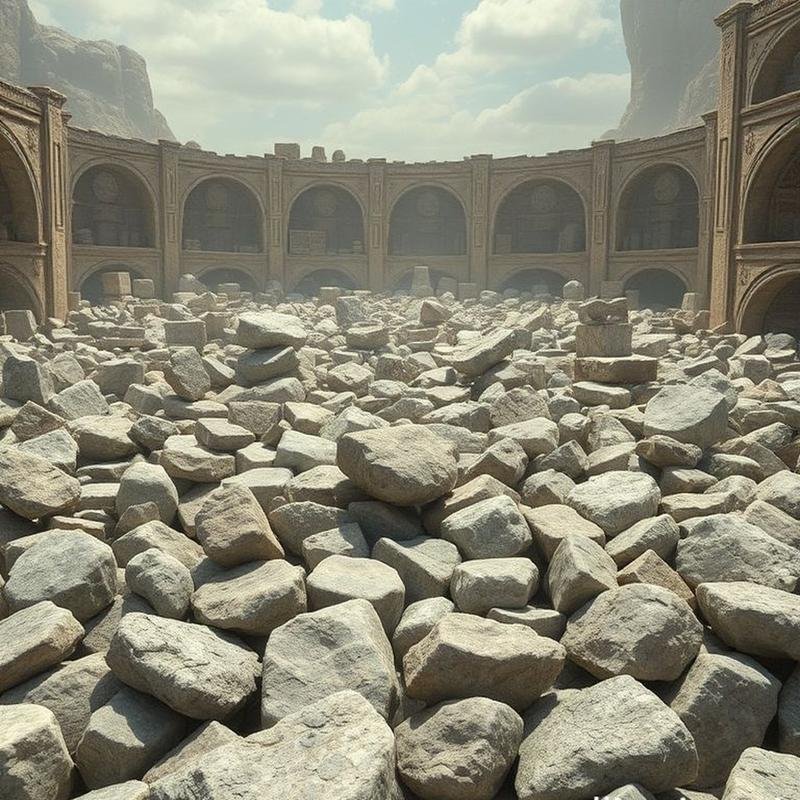Ica Stones: Dinosaurs and Heart Surgery! 🤯📜 Fact or Fiction?

Ica Stones: Dinosaurs & Ancient Surgery – Fact or Hoax?
How can a silent stone seemingly scream the secrets of prehistoric ages, challenging established understanding of the evolution of life on Earth? These are the Ica Stones. Their captivating engravings defy conventional logic, depicting both majestic dinosaurs and complex surgical procedures. We embark on a compelling investigation to uncover the truth behind these enigmatic artifacts. Are they a window into a lost civilization that flourished alongside dinosaurs, or simply an elaborate hoax designed to rewrite history?
Before we delve into the evidence, share your hypothesis in the comments section. And be sure to subscribe to the channel and join us on this exciting journey.
What Secrets Do These Ancient Stones Conceal?
The astonishing drawings depict dinosaurs, not merely random lines, but remarkably accurate representations of creatures familiar from books and films: a majestic Stegosaurus and a ferocious Tyrannosaurus. How could these ancient artists have possessed knowledge of creatures that became extinct millions of years ago?
However, the most startling images depict complex surgical operations, including detailed organ transplants and even open-heart surgery. Dr. Javier Cabrera, who dedicated his life to collecting these stones, asserted that some engravings illustrate heart removal and transplantation, as well as blood transfusions. Could these stones provide evidence of a civilization predating our own by millennia, possessing medical knowledge that surpasses our current understanding?
Even more astonishingly, some engravings appear to depict the use of anesthesia during operations, individuals connected to devices resembling respirators, and a comprehensive anatomical atlas illustrating the stages of human embryonic development with incredible detail. Are we witnessing a glimpse into an alternate history of humanity, or is there a more plausible explanation awaiting discovery?
Dr. Javier Cabrera Darquea: Collector and Advocate
At the center of this mystery is a pivotal figure: Dr. Javier Cabrera Darquea. A physician and surgeon, he was, above all, a passionate collector. In 1966, Cabrera established a unique museum in Ica, dedicated entirely to the enigmatic Ica Stones.
Cabrera’s archaeological library comprised over eleven thousand stones, which he believed bore witness to an ancient civilization predating our own by millions of years. He inherited the initial portion of this collection, three hundred and forty stones, from his father, the dean of the Faculty of Medicine. However, Cabrera’s ambition extended beyond mere collection; he viewed these engravings as conclusive evidence of advanced humans possessing sophisticated medical and astronomical knowledge.
In his book, “The Message of the Stones of Ica,” published in 1976, Cabrera sought to disseminate his bold theory, but faced considerable criticism and accusations of forgery. Was Cabrera a genuine seeker of truth, driven by a thirst for knowledge, or a seeker of fleeting fame? Was his museum a legitimate window into the distant past, or simply an illusion created by a passionate man captivated by his own interpretations? Until his death in 1999, Cabrera remained a staunch defender of the stones’ authenticity, leaving behind a controversial legacy and a museum that continues to provoke questions.
The Confession of Basilio Uchuya
While Dr. Cabrera is no longer with us, the fundamental question remains: what is the true origin of these stones? The earliest documented mention dates back to the 16th century, by the Spanish missionary Father Simon, who noted their presence in the region. However, the modern narrative begins in the 1960s, with a struggling farmer named Basilio Uchuya.
Uchuya, facing financial hardship, began selling the stones to curious tourists, claiming to have discovered them buried in his fields. These carved stones soon became an unexpected source of income, but the reality was more complex than it appeared. In 1973, during a candid television interview, Uchuya confessed to carving the stones himself, motivated by financial necessity and a desire to supplement his meager income.
Uchuya’s actions spawned imitators who exploited the public’s fascination with mystery and the paranormal. Rigorous geological analyses revealed that the stones are composed of local andesite and that the engravings are relatively recent, further fueling suspicions. In 1998, Uchuya reiterated his confession in an interview with the BBC, confirming that he had produced the stones and that others had followed suit.
Despite these explicit confessions, conspiracy theories persisted, asserting that the stones were genuine and secretly carved, and that Uchuya’s confessions were merely a smokescreen to conceal a deeper truth. Was Uchuya simply a farmer fabricating a story for financial gain, or was he protecting a secret of greater significance? Are the stones merely an elaborate hoax, or do they hold a deeper meaning? This is where scientific investigation plays a crucial role in separating fact from fiction.
Scientific Scrutiny: Are the Ica Stones Genuinely Ancient?
Could the Ica Stones genuinely be ancient? The answer, unfortunately, appears to be negative. Although the first mention of these stones dates back to the 16th century, none have been discovered within a reliably documented archaeological context. The absence of a geological stratum that accurately determines their age presents a significant obstacle to any attempt at scientific dating.
Expert analyses further reinforce suspicions. Microscopic examinations reveal that the engravings on the stones are recent and were likely created using simple tools, even dental instruments. The stone itself, andesite, is easily carved, making it susceptible to sophisticated forgery. Radiocarbon dating performed on some stones has yielded varying ages, but this does not validate the authenticity of the engravings themselves. The stone may be ancient, but the engraving remains a contemporary enigma. Therefore, there is no conclusive scientific evidence linking the Ica Stones to an ancient civilization or to the coexistence of dinosaurs and humans.
Who Benefits from the Deception?
However, the question arises: who truly benefits from this deception? The answer, as is often the case, is multifaceted. In the 1960s, with the surge in tourism in Ica, the trade in engraved stones flourished. Basilio Uchuya, the farmer who later confessed to forging some of them, was a primary supplier. Then came Dr. Javier Cabrera, who collected the stones and displayed them in his museum, thereby increasing their popularity. Cabrera, perhaps driven by his belief in an advanced civilization predating the Inca, may have viewed the stones as a means to validate his theory and enhance his standing within academic circles. The economic dimension cannot be overlooked. Documentaries and books promoting the stones as evidence of an ancient civilization fueled their sales and attracted tourists to the region, resulting in increased revenue for the museum and local vendors. Was the motive simply greed? Or were there ideological factors at play, motivating some to promote this narrative, perhaps to challenge accepted historical accounts? In a world rife with mysteries, hidden motives are often more complex than apparent facts.
Pseudoarchaeology and the Allure of Lost Civilizations
In the depths of purported history, echoes of lost civilizations whisper, said to have coexisted with dinosaurs. But the question remains: where is the definitive evidence? We find no human footprints alongside dinosaur tracks, nor a single skeleton linking their existence within the same geological stratum. Pseudoarchaeology thrives on speculative interpretations, transforming enigmatic artifacts into proof of impossibly advanced civilizations. But have we truly paused to consider the evidence critically? Are these artifacts genuine keys to lost civilizations, or merely skillfully crafted forgeries or dangerously misinterpreted evidence? Consider the Antikythera mechanism, often presented as evidence of inexplicably advanced Greek technology. It is indeed a complex astronomical device, but ultimately, it does not reach the level of modern technology as we understand it today. We are captivated by the notion of coexistence between humans and dinosaurs, but it disregards a fundamental fact: humans did not appear on this planet until millions of years after the extinction of the dinosaurs. Did not the eminent paleontologist Stephen Jay Gould caution us against the dangers of unscientific interpretations of fossils? Are not many of the sensational stories about ancient civilizations with extraordinary technology inspired by science fiction?
The Ica Stones in Popular Culture
Have we ever wondered how such extraordinary ideas take root within our collective consciousness? How do tales of the distant past transform into established facts in our present? The Ica Stones, those controversial artifacts, have not only remained confined to books and museums, but have subtly infiltrated the core of popular culture, igniting the spark of wild imagination and fueling the most elaborate conspiracy theories. These stones have been incorporated into captivating fictional works and cinematic films, depicting ancient civilizations that achieved remarkable levels of advancement and coexisted peacefully with colossal dinosaurs, thereby raising profound questions about our history and igniting an insatiable passion for the mysterious unknown. Even some ardent proponents of scientific creationism have found in these stones conclusive evidence of the coexistence of humans and dinosaurs, sparking heated debate within both religious and scientific communities. We cannot ignore the pivotal role that documentary television programs have played in disseminating these perplexing mysteries as widely as possible, nor the clever commercial exploitation of counterfeit stones.
Conclusion: Myth vs. Reality
So, where does this investigation lead us? Are the Ica Stones definitive evidence of a bygone, advanced civilization that coexisted with dinosaurs? Most likely, no. Despite the vast number of stones collected by Javier Cabrera, and the compelling narratives conveyed by their engravings, scientific and archaeological evidence presents a formidable barrier to accepting this hypothesis. The confessions of the stone carvers, and their complete absence from documented archaeological sites, cast significant doubt on their authenticity. The depictions of complex surgical procedures and dinosaurs, rather than serving as evidence of an advanced civilization, appear to be the product of a contemporary imagination etched onto the surface of simple stones. Scientists suggest that these stones, for the most part, are nothing more than counterfeit artifacts, created for a single purpose: to attract tourists and generate financial gain. But even if the Ica Stones are merely an elaborate hoax, they still pique our curiosity and prompt us to question the limits of human knowledge and our susceptibility to believing what we desire to believe.
Ultimately, the Ica Stones serve as a reminder of the power of suggestion and the human capacity to create myths.







